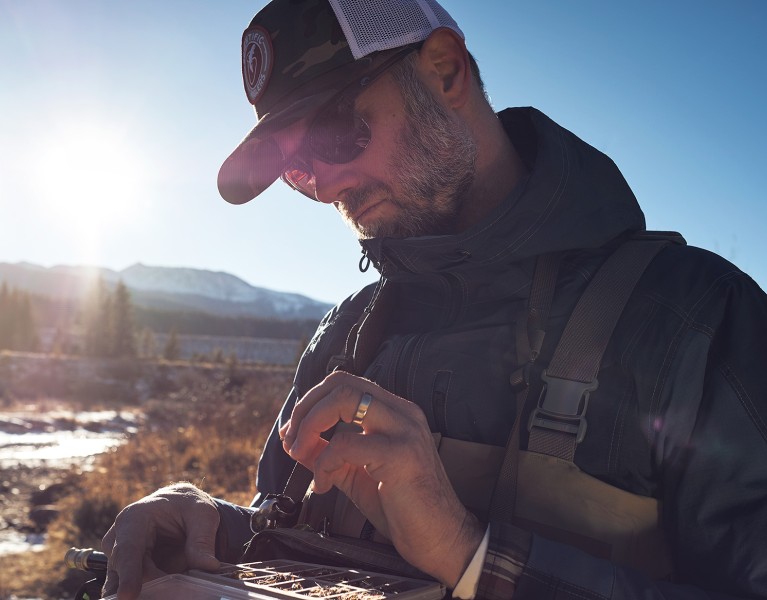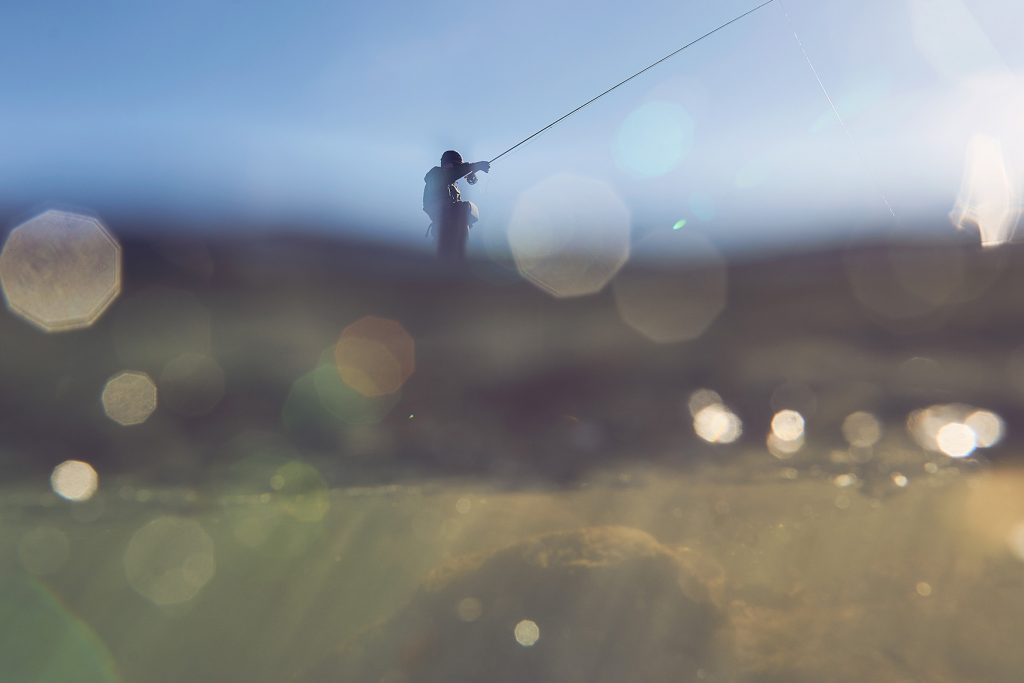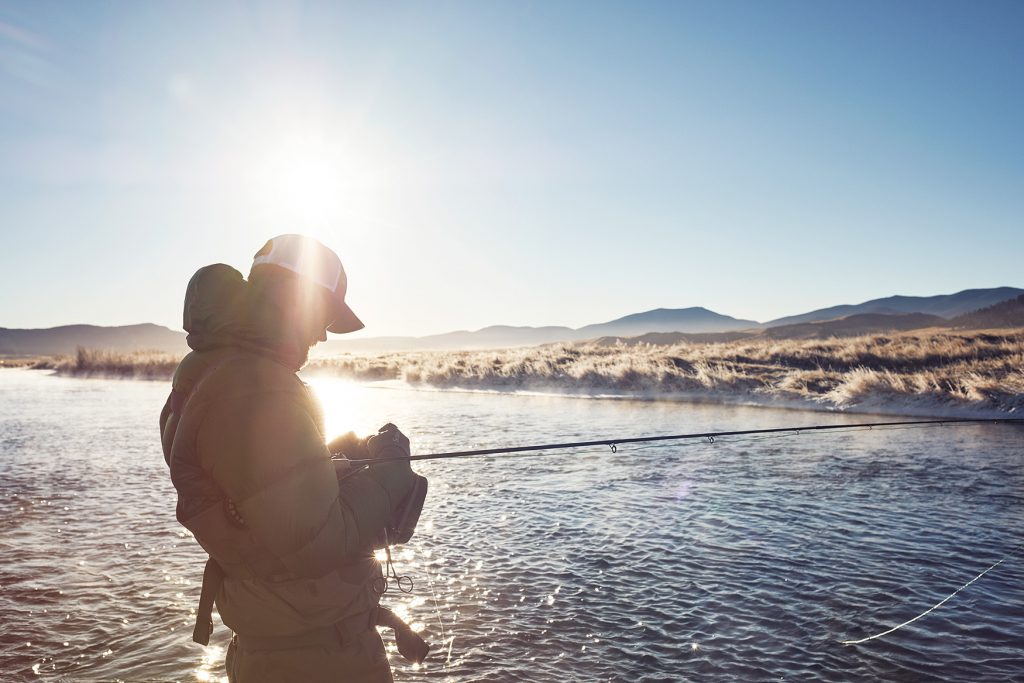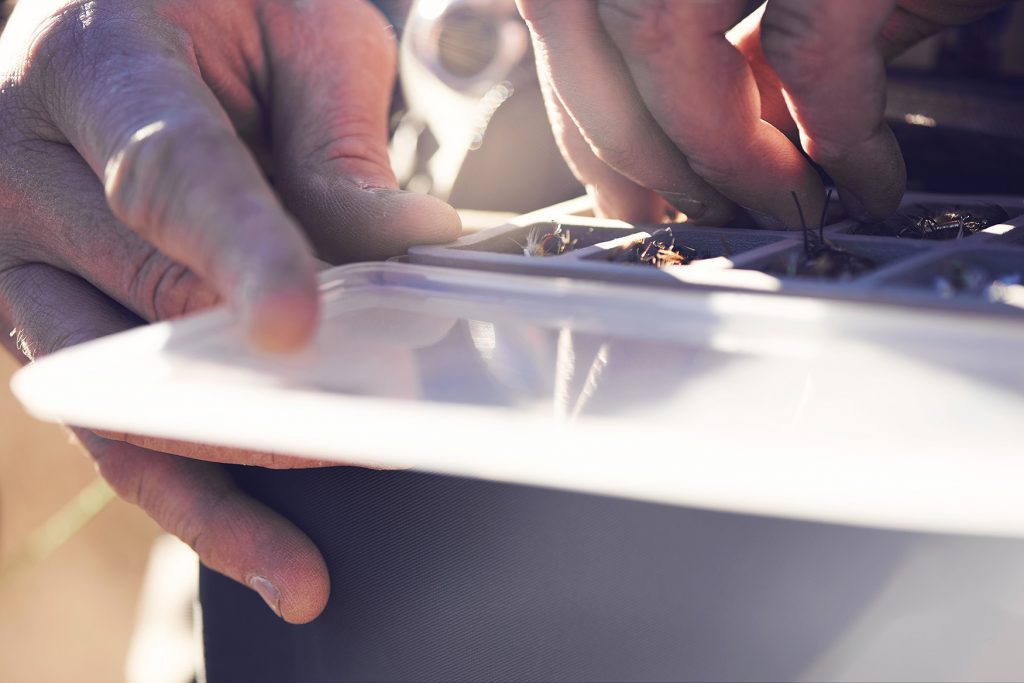
Seven Ways the Fish Can Win: Safety Awareness for Inland Anglers
Table of Contents [Show]
I'm not going to make any comparisons between recreational fishing and the "Deadliest Catch" series, other than this: Many of the same things that can kill an Alaskan crew member can befall an angler, especially alone on backcountry water. Those of us who pursue inland species often take safety for granted. Fishing is supposed to be a relaxing pastime, after all, not an extreme sport.
The truth is, any time we interact with nature, especially when we're out of shouting distance from civilization (to say nothing of proximity to improved roads and emergency services), the stakes are high. Here are the seven most likely ways a day at your favorite fishing spot can make you promise you'll never skip out on work again.
1. Drowning
I remember chatting up a rafting guide on Oregon's Deschutes River several years go. My morbid curiosity prompted me to ask how many rafters and kayakers drowned any given year. "Actually," she said, "I think we see at least as many incidents with people who come here to fish." Variable water levels, algae-slick rocks, and misjudging holes and obstacles can knock anglers off their feet. Waders worn without snug-fitting belts quickly get swamped, acting as sea anchors. Unexpected submersion in icy water triggers the gasp reflex, which can cause drowning in an instant.
Don't load up your vest or daypack with more gear than you need. If you fall in, you don't want to struggle with the extra weight or increase your risk of getting caught on snags. Pack light, and leave as much of your gear on the bank as possible.
You can find some great fishing vests with integrated personal flotation devices, and suspender-style manual or self-inflating PFDs won't restrict your casting motion. If you're on board a kayak, raft, or motorized boat, nothing beats the old-school vest-type life jacket. No matter which style you prefer, make sure it's Coast Guard approved and that you inspect its condition every season. And always make your kids wear a PFD that fits them.

2. Slips and falls
Slippery and unstable submerged rocks are one hazard, but boulders and steep banks along the shoreline are another—especially if you're hauling a lot of gear and you're in a hurry to get to the water. Wear waterproof footwear that supports your ankles, and quality wading boots when you leave dry land. Note, many states have outlawed felt wading boot soles due to their ability to harbor and spread invasive species, so check with local regulations to avoid expensive fines and prevent ecological damage. Rubber is the accepted alternative.
A good wading staff can save your life, or at least prevent you from incurring massive medical debt. Use it as support on dry land and in the water, and to get a feel for uneven terrain and unstable banks. More than once, I've used a wading stick to knock a lure out of a tree, and to help me gain leverage when I fell in fast-running, body-pinning water. Look for one that folds up and stows on your back so it doesn't tangle up in your line.
If you happen to get carried off in a current, keep your knees unlocked and your feet up and pointed downriver. Use your legs as shock absorbers if you hit boulders.
3. Sunburn
Have you seen the latest trend in fishing fashion? Neck gaiters! When I was browsing Fishbrain, the social media app on which anglers from around the world post their brag photos, I thought that the purpose of these colorful, faux-turtleneck cloth tubes were to hide the identities of employees who'd called in sick to go fishing. Nope! Also known as "fishing masks," these lightweight face and neck shields made from UV-resistant fabric help protect boaters and anglers from sun and wind damage.
Skin cancer is, far and away, the most common form of cancer in the United States, and high-SPF sunscreen alone isn't enough to protect you from over-exposure to ultraviolet light. Full-coverage UV-resistant clothing, gloves and hats can further reduce your risk. Remember, the sun's rays bounce off the water, increasing your exposure and affecting areas otherwise shaded from above.
Protect your eyes with high-quality UV-resistant sunglasses. If you're spending the extra money for polarized lenses, you might as well invest in shades that will prevent burned corneas.

4. Hypothermia
Whether you're ice fishing, pursuing early spring steelies, or fishing deep desert canyons during the summer, wool socks and base layers will save your butt (and more exposed appendages) if you get wet or stranded. I take along water-resistant pants and jackets in my day pack no matter the season, especially if I'm planning on wearing waders on a cold stream or in my float tube on an alpine lake. Even along rives like the Deschutes, which can be hot as Hades during the day, I feel better knowing I have dry, warm layers if the temperatures plummet when the sun sinks behind mountains and cliffs.
5. Insect and animal bites
Prepare to match the hatch with your favorite flies, but don't forget to compensate for mosquitoes, fire ants, biting flies, and scorpions. Leave the essential oils at home and pack the DEET. Bring a mesh hood, and watch where you sit and step. Use that wading staff to poke around rocky terrain and scrub to flush out rattlesnakes.
Don't forget your favorite topical sting relief product, and if you have a known allergy to bees and wasps, pack an epinephrine pen as part of your adventure first-aid kit. Don't bother with snakebite kits; they usually do more harm than good.
6. Dehydration
Water, water, everywhere... and not a drop to drink! Wind, sunshine, heat, and exertion can make thirst creep up on you. Be sure you have a ready source of water, and drink plenty of it. Don't count on surface water for refills, unless you filter it through tightly-woven cloth and treat it with tablets or a filtration pen. You could boil it or use a backpacking filter, but unless you're camping, keep it simple. Dehydration leads to decreased brain function, which in turn leads to bad decision-making and loss of coordination.

7. Cuts and punctures
Every angler's going to impale themselves on a hook at some point or another. If you inadvertently embed a hook in your finger, leave it until you can get medical care preferably. If it's almost all the way through and you just can't help yourself, push it the rest of the way and cut off the barb with wire cutters. A multi-tool or fishing first-aid kit is a great addition to your tackle box.
Rinse the area with bottled or boiled water—never river, lake, or pond water—and apply a triple-antibiotic cream and bandage. Keep all other cuts and abrasions out of the water, and use basic first aid techniques to keep them clean and protected. If you haven't had a tetanus shot in the past five to ten years, you might want to get one when you get back home. They're usually available at chain drug stores, and they're not too expensive.
It's not just "the angler versus the fish"...
If you've found this blog, it's not likely that you're content to camp in paved and numbered loops, limit your climbing to the local gym, or fish off the boat launch dock at the local reservoir. While we're out there trying to best the brookies, nature can get the better of us. Let people know where you're going, and when you'll be back. Carry a basic emergency kit, and have a reasonable understanding of how to treat the injuries you're most likely to suffer on your adventure. Wear the right clothing in appropriate layers, and be mindful of predicted weather and water conditions.
Have fun, and don't forget to catch-and-release wild species, so everyone can live to fish—or be fished—another day.


